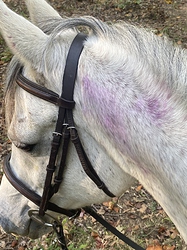Yes, you are right. Used the wrong word. It grows and spreads very easily. And birds do love it, but then they poop purple so choose where you let it grow carefully. (Not by clothes lines and white cars!)
I belong to a plant ID group on Facebook and people ask about this plant all the time. It’s probably best for people to tell others that it is toxic, because if you don’t even know what it is, you surely aren’t in a position to cook it safely. But people always want to share their recipes. While I’ve never had it - I doubt very much that it’s worth the hassle to eat unless you’re starving. (Which is probably why people figured out it could be eaten safely if you do it right. Hunger makes lots of things seem reasonable.)


